If you are conscious of your teeth being discoloured, chipped or wonky then you may consider getting dental veneers to improve your smile, but how much do they cost?
Dental veneers are becoming an increasingly popular way to whiten your smile in the UK thanks to their lower cost and affordability compared to other restorative options.
In this guide, we will provide answers to some common questions including:
- How much do dental veneers cost in the UK?
- What types are available?
- How are they fitted?
- Do they look natural?
Cosmetic dentistry such as composite and porcelain veneers are available, each having its own advantages and disadvantages. We will explain more about the different types and the cost for veneers in the UK. Whichever type you choose, the fitting process is quick and usually painless.
The average cost of dental veneers in the UK is between £500 to £1,000 per tooth. Factors such as location, dentist experience, and type of veneers used can affect the cost, which can range from as low as £100 to as high as £2,000 per tooth. A full set of veneers can also be more expensive.
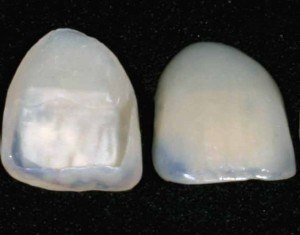
Keep reading to find out more about dental veneers and whether they could be the best way for you to get a smile you can show off with confidence!
In This Article
What are dental veneers?
Dental veneers, also known as teeth caps, are thin pieces of porcelain or composite resin that are custom-made to fit over the front surface of a tooth to improve the appearance of a person’s teeth and smile.
When are dental veneers used?
Dental veneers are commonly used to correct teeth that are chipped, discoloured, misaligned, or have gaps between them. They can achieve a number of results:
- Change tooth colour: Sometimes teeth can have a dull or yellowish colour, whether naturally or due to lifestyle choices (smoking, coffee, wine, etc.). Medical treatments (for example repeated high dose antibiotics as a child) or trauma which kills the nerves inside can cause discolouration. And fluoride treatments can cause white spots on teeth. A patient’s teeth may be too sensitive to proceed with whitening treatments in some cases.
- Cover translucent teeth: Thinning enamel can lead to translucent teeth. Veneers can offer protection and aesthetic improvements.
- Alter the shape of teeth: Teeth can be naturally too small or too short, causing you to be self-conscious about smiling. This technique allows you to remodel the shape of your smile and efficiently even out differences.
- Repair chipped teeth: May people have small chips in their teeth which, although not medically problematic, they feel conscious of.
- Improve alignment: People who want to straighten teeth without braces may consider dental veneers. They can be used to remove gaps and correct misaligned or irregular teeth. However, this treatment is not recommended for younger patients since it removes so much healthy enamel and can’t be reversed. In these cases, orthodontic treatment is preferable. Fortunately, the wide variety of adult braces available today means this needn’t involve an unsightly ‘metal mouth’.
- Repair damage caused by bruxism: Patients who have suffered from bruxism (tooth grinding) in the past may have ground the enamel off their teeth. Applying porcelain covers not only restores the cosmetic appearance but protects teeth from sensitivity to hot and cold.
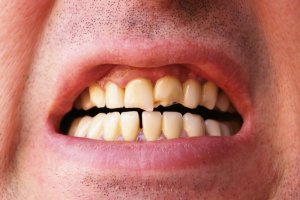
The most natural-looking and durable veneers are made from porcelain, but composite materials are more economical.
Porcelain veneers are sometimes referred to as instant orthodontics because of how quickly they can change or enhance your smile. Patients who have crooked, chipped, stained teeth, or other cosmetic flaws, can use veneers to get a smile they’re confident with almost instantly.
Veneers are tooth-coloured coverings that are placed on the front of a tooth. However, they are not the same as other procedures, like crowns, because they only cover the front of the natural teeth. The best part of veneers is that they don’t require special care, you just have to commit to a strict oral hygiene routine, being sure to brush at least twice a day and floss once per day to keep them clean and stain-free.
Dr. Ania Mohelicki
How much do teeth veneers cost in the UK?
The cost of teeth veneers in the UK can vary depending on a number of factors, including the type of veneer material used, the number of veneers being placed, and the location of the dental practice.
On average, dental veneers in the UK can cost between £500 and £1,000 per tooth, although prices can range from as low as £100 per tooth to as high as £2,000 per tooth.
The composite teeth veneers price is around £100 – £400 while the porcelain veneers price in the UK is around £400 – £1,000. This is just an estimate, of course, and the actual veneer price quoted by your dentist will depend on the problems that need to be addressed.
It is important to consult with a dental professional to get a more accurate estimate of the price of veneers in your specific case. Many dental practices also offer financing options to help make the cost of veneers more manageable.
Can you get dental veneers on the NHS?
The NHS usually does not cover the cost of anything considered cosmetic work, including veneers. In some rare cases, where considered medically necessary, it is possible to get teeth veneers on the NHS. Dental crowns are a more common treatment for damaged teeth, though. In both cases, the treatment price will be £282.80 (for 2022/23).

Can you save money on dental veneer cost in the UK?
If you have private health insurance with a dental insurance plan you should check to see if your policy covers any cosmetic treatments. Usually, base-level plans do not, but more expensive plans might reimburse at least some of the cost. You could also consider other dental financing options such as a loan or credit card.
An alternative way to get cheaper veneers is to consider travelling abroad to a country where cosmetic dentistry is more affordable.
Several high-profile celebrities have got dental veneers in Turkey, giving it quite a reputation for this type of cosmetic work. Hungary and Spain are also known for offering high-quality medical care at prices much lower than private care in the UK.
Even once you take into account the cost of flights and accommodation, you may find that teeth veneers cost a lot less than back home in the UK. This is therefore a good way to make genuine savings without skimping on quality, especially if you combine the treatment with a well-deserved break.
How do veneers work?
Dental veneers work by covering any imperfections or stains to improve the appearance of the teeth. They can also help to protect the tooth from further damage.
Treatment will vary depending on your needs. If a simple change in tooth colour is what you require, the process is relatively straightforward and will be completed in two or three stages.
Veneers can be used on a single tooth or a larger number. A full set can be applied to all the front visible teeth if needed. They are made to measure and designed to match your existing tooth colour so they look completely natural.
More complex projects such as correcting tooth alignment or covering a chipped tooth might require more planning and testing to ensure the solution is exactly as desired. The dentist will often create a dental mock-up in order to test different shapes and find a solution that the patient is happy with.
Porcelain veneers are created by a skilled lab technician, which takes time and adds to the cost. Composite veneers, on the other hand, are built up and shaped as the dentist applies the material, so no lab work is required.
It is absolutely essential to go over everything with your dentist before you begin. He or she should give you full details about the steps involved and the end result. Although you will need to invest some time and money in the process, it is still less invasive, quicker, and less expensive than placing an implant or a crown (which you can read more about further down).
This video shows the many steps which go into fitting a single veneer. You can read a more detailed explanation below.
The veneers process
After your initial consultation where you can explain your problem and your expectations, your cosmetic dentist will take photos and may create a dental impression of your existing teeth. They might perform an x-ray of the mouth to check the current tooth condition.
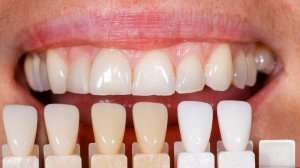
Your dentist will also check for problems such as gum disease which may need to be addressed before treatment commences.
If you are happy to proceed with the proposed treatment, your dentist will begin preparatory work. This usually involves ‘trimming’ a thin layer of enamel off the tooth or teeth to make them the right height and size for the veneers to attach to. With some types of veneer, no enamel removal is necessary.
This process shouldn’t be painful as there are no nerves present in the enamel. However, your dentist may administer an anaesthetic as a precaution.
If the ultimate goal is whiter teeth but you are not having all your teeth covered, you may need a dental cleaning and tooth whitening on surrounding teeth before veneers treatment begins. If veneers are colour-matched to whitened teeth, you’ll have to keep up a regular teeth whitening schedule. Otherwise, the natural teeth will start to look yellow in comparison.
Composite veneers
Composite veneers are a type of dental veneer that can often be applied in one visit. The dentist roughens the tooth surface with acid and then puts a bonding agent (glue) on the teeth.
He then builds up the composite material in thin layers, gradually forming the tooth to the required shape. The composite/resin is hardened at each stage using a special light.
Once both you and your dentist are happy with the look, colour and shape of the veneer, the surface is polished so it looks and feels like a natural tooth.
Porcelain veneers
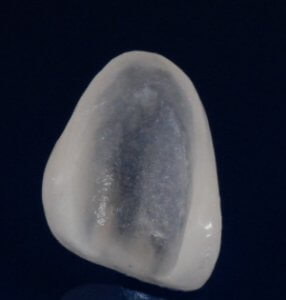
When it comes to porcelain veneers, the process takes longer. This is because each veneer must be individually crafted in a laboratory. Expect this to take anywhere from 1-3 weeks.
After your teeth are filed down, your dentist will take a dental impression using putty. This imprint is used to ensure the veneers are a perfect fit. This mould will also be used to create a mask, if needed, to plan the end result where significant changes are being made to the shape or size of teeth.
You might be given temporary veneers at this point, to protect the prepared teeth while you await the permanent ones. Not all dentists offer a temporary option, though.
Once your porcelain veneers are ready, you will have your next appointment. Your dentist will thoroughly clean your teeth again and use an acid to roughen the surface of both the tooth and the veneer. A strong dental adhesive is used to secure the caps in place.
Fitting or creating veneers for teeth is a precise art and may take one or two hours depending on the number of teeth being treated.
Ideally, a rubber dam should be used to isolate the tooth/teeth being worked on. This keeps the surface dry, as any moisture may interfere with the bonding agent.
Dental veneers before and after
Some of the results achieved are quite astounding, often completely transforming a person’s smile. You may hear the procedure referred to as a ‘smile makeover’. Before and after photos show how much a smile can alter a person’s face.
During your initial consultation with any dental professional, be sure to ask to see before and after photos of their previous patients. This is a good way to check the quality of their work – especially in terms of how natural it looks.
In the video below you can see some more teeth veneers before and after using a same-day process:
Types of dental veneer
We have already described the fitting process for the two main types of veneer: composite and porcelain. But this procedure is just one thing to take into account when deciding which is right for you. Here are some of the other things you may want to consider.
Pros and cons of composites
Composites are significantly cheaper than porcelain teeth, but in return, the aesthetic appearance can be less convincing. They aren’t expected to last as long either, with a life span of up to 5 years. After this time, the material may start to chip away or stain and become unsightly.
Nevertheless, composites are a solution that can be very useful as an inexpensive alternative while saving up for porcelain. In this case, they act as ‘temporary veneers’, even if worn for several months or years.
It may be possible to fit composites without removing any enamel (only using acid etching) from the healthy tooth – particularly in cases where the patient wants to fix a tooth that is too short or small. For many people, this is a big benefit because it means the treatment is almost fully reversible.
The end result is highly dependent on the skills of the cosmetic dentist, so be sure to check their previous work before going ahead.
Pros and cons of porcelain
By far the most durable type of teeth caps is the ones made from porcelain material. Although wafer thin, these can be expected to last 10-20 years. Zirconia porcelain veneers can provide extra strength for teeth with slight damage but don’t require a crown.
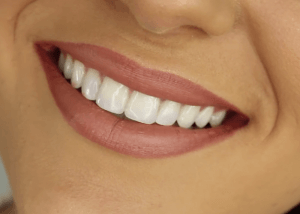
Porcelain is stain-resistant and the translucency of the material means they closely resemble natural teeth.
The fact that they are hand-made in a laboratory means there is less onus on the dentist in the procedure. However, they must still be skilled at preparing the teeth and placing each piece correctly.
The biggest drawback to porcelain for most people is the cost, which is usually at least double that of composite. Some people are also put off by the idea of having enamel removed from healthy teeth, as these teeth can’t be left uncovered again. You’re therefore committing to a lifetime of veneers or some other teeth covering.
The table below summarises the main differences between composite and porcelain veneers for teeth:
Porcelain Veneers | Composite Veneers | |
Practice Visits | Multiple | Usually just 1 |
Longevity | 10 - 15 years | Up to 5 years |
Aesthetics |
|
|
Cost per tooth | £450 to £850 | £100 to £400 |
Damage to existing teeth | Filing & enamel removal required except for Lumineers | Possible filing & enamel removal |
Choosing the right brand
There are some brands of veneer which offer specific benefits.
Lumineers veneers have an ultra-thin design which means they can improve the cosmetic appearance of existing teeth without the need for any filing. They are typically more expensive, but last for 20 years or more and can later be removed without any permanent damage to the teeth. Fitting takes place over two visits.
CEREC (Ceramic Reconstruction) veneers are not made by hand but are precisely cut from porcelain blocks using advanced computer technology based on scans of the patient’s mouth.
These can be made by your dentist while you wait, meaning you can have custom-made teeth in a single visit. However, the appearance may not be as natural as with lab-made ones.
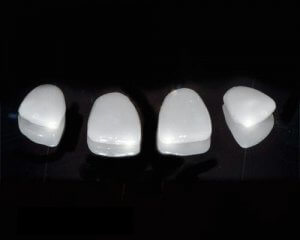
CEREC costs are similar to standard porcelain because although there are no lab fees to pay, the computer equipment is very expensive.
Technology is improving all the time so your dentist may have other solutions on offer as well.
Although the budget is an important consideration, don’t simply look at the cost for teeth veneers when choosing a dentist to provide your treatment. You should search for a recognised professional with significant experience in this cosmetic procedure.
Ask your dentist which option they recommend but also ask about alternatives. Make sure you understand how long the tooth veneers will last – and what happens when they fail.
Snap-on veneers
You might have seen snap-on veneers promoted as a cheaper alternative to traditional veneers. These are like a set of fake teeth which clip directly over your existing teeth to improve your smile. Snap-on veneers can cover up missing, crooked, gappy and damaged teeth and give a perfect-looking smile in an instant.
While this might be a good solution if you want to look great in your wedding photos or need a confidence boost for a work meeting, clip-in veneers are not a great long-term solution. There is a risk of damage to the natural teeth if worn for extended periods.
People also report mixed experiences with this type of product. Some are very happy with the results, while others have trouble eating and talking, or the teeth don’t feel comfortable or look natural.
If you are considering this type of veneer, then Snap-On Smile is the gold standard of clip-ins because they are prescribed by a dentist. Or, read our instasmile review, another popular, cheaper brand of snap-on veneers.
If you only have minor cosmetic problems with your teeth, you may be a suitable candidate for teeth filing. This treatment simply removes small areas of enamel to make teeth appear more even.
Conclusion

If you want to improve the aesthetic appearance of your smile, dental veneers are one option. You’ll need to choose between porcelain and composite veneers, and the decision will depend on your budget, the look you want to achieve, and how long you want the treatment to last.
Be aware that most types of veneers require some tooth enamel to be removed in preparation. This means your teeth are permanently changed and can’t go back to how they were before.
If you’re unsure about your decision, you may still be able to significantly improve the aesthetics of your teeth with less invasive treatment such as braces, whitening and tooth filing. Here is one example of how a patient was able to achieve a smile she loved without getting the veneers she had originally planned.
Whatever you decide, we hope this guide has helped you make a more informed decision about which treatment is right for you.
And remember, you can chat with a dentist at any time — 24/7 about your temporary crowns. A team of certified dentists is standing by at JustAnswer.
FAQs
How much is a full set of veneers?
The cost of a full set of veneers can vary widely depending on several factors such as location, type of material used, and the dentist’s experience, but it typically ranges from £5,800 to £14,500.
How much are veneers in the UK?
The cost of veneers in the UK can vary depending on several factors such as the type of veneer, the dentist’s fees, and the location. However, the average cost can range from £500 to £1,500 per tooth.
What do teeth look like under veneers?
Veneers can make natural teeth look smaller as a thin layer of enamel is removed. They create a smoother, uniform shape and cover any flaws, giving the appearance of perfect teeth.
Are veneers covered by insurance?
Veneers are generally considered a cosmetic treatment and are not usually covered by NHS in the UK, but private dental insurance plans may offer some coverage for veneer treatment.
Oral Health Foundation https://www.dentalhealth.org/veneers Consulted 26th December 2022.
Medical Xpress https://medicalxpress.com/news/2011-07-dentists-widespread-porcelain-crowns-veneers.html Consulted 26th December 2022.
Scientific Research Publishing https://file.scirp.org/Html/6-8202952_48674.htm Consulted 26th December 2022.
Dentistry.co.uk https://www.dentistry.co.uk/2019/01/23/porcelain-veneers-pros-cons-patients/ Consulted 26th December 2022.





